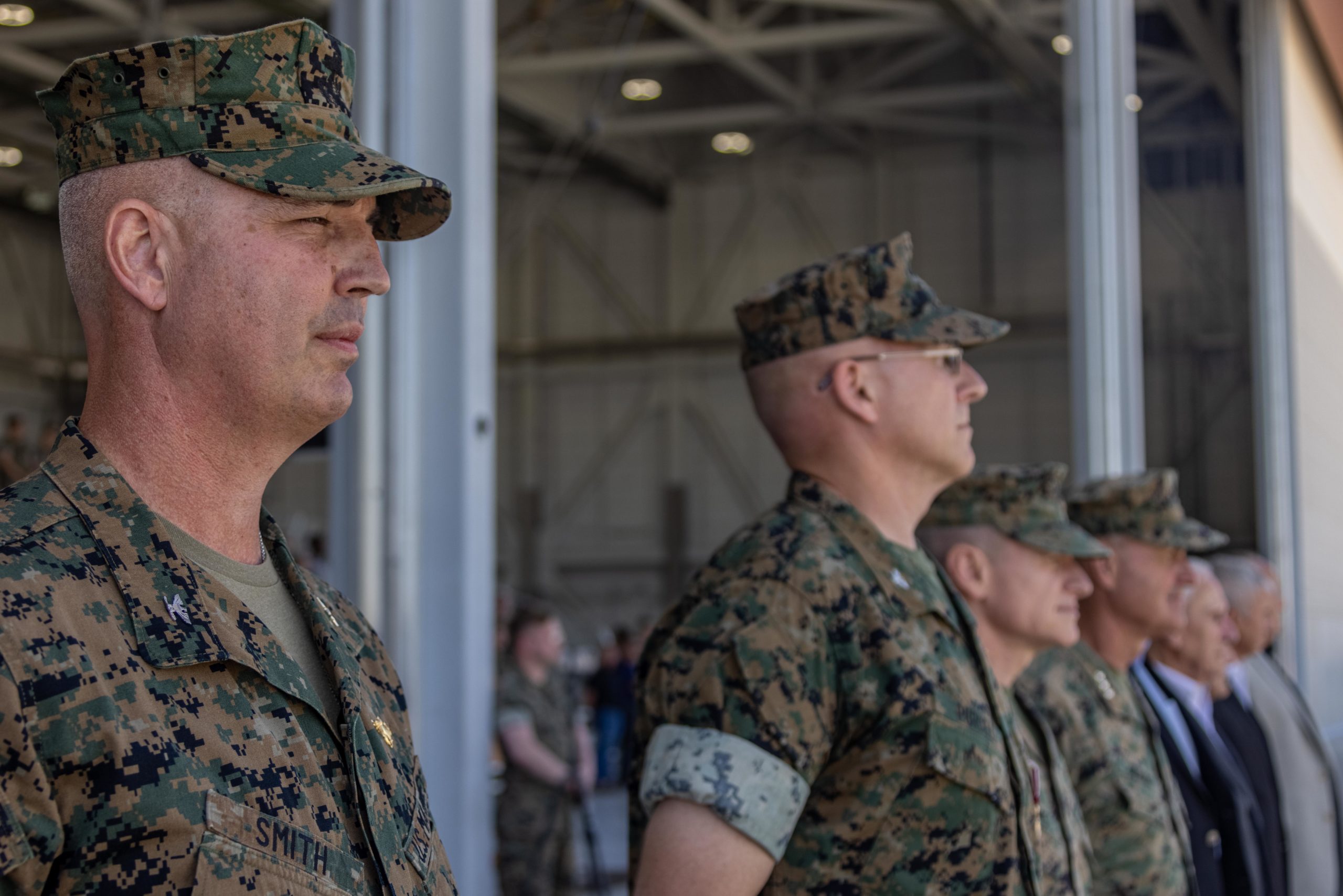An Update on MAWTS-1: The Perspective of the Outgoing and Incoming Commanding Officers, May 2024
On the day before the change of command at MAWTS-1, I had a chance to talk with the outgoing commander, Col Purcell and the incoming commander, Col Smith. I had last been to MAWTS-1 in November of last year, where we focused on the WTI or the Weapons and Tactics Instructor Course just completed before my visit.
This time the first WTI course of this year had just been completed and we had a chance to discuss the FINEX event which closes out the course.
Col Purcell started by underscoring that the grounding of the Ospreys by the services after the accident last year with an Air Force Osprey, created a challenge for them. Not having Ospreys – which frankly are a bedrock platform in the transformation of their concept of operations – caused a problem in the WTI. There were some missions they simply could not do, and shifted assets around to do missions which was not their primary mission focus.
When I worked for the SECAF, he had a “day without space” for the USAF, which was not a pleasant experience for the airmen. Similarly, “weeks without an Osprey” was a similar experience, and reinforced how crucial the platform is for the kind of con-ops the Marines have become used to being able to do with an Osprey-enabled force.
Col Purcell talked about the changes that have occurred since taking command. He underscored that one major change has been working in maritime strike packages into the force as well as enabling the ability to do EABOs or Expeditionary Advanced Base Operations.
But he made it clear that EABOs are not an end of themselves: what combat purpose do they meet and how do they make for a more effective force in particular missions?
This is how he put it: “The ability to conduct expeditionary advanced bases, that’s a capability that’s going to enable something else. It is not a mission of itself. EABOs are what we do in an operational area to project lethality and to project our power and delivering capability to deter an enemy. It has to be about the ability to integrate all six functions of marine aviation in support of a larger mission.”
With regard to shaping a maritime strike package, Purcell described the journey during his time in command. They went from starting the effort with little involvement of the Navy, to the latest FINEX where the Navy fully participated, and the Marines were able to work a complex strike mission in support of the maritime force.
One mission which has been identified and which MAWTS-1 has been training for is the TRAP mission associated with a maritime strike mission. The need to recover rapidly any personnel downed in a maritime assault mission is something the Osprey is uniquely positioned to do. Only you can’t do it if it is not there. Fortunately, the ban on Osprey use was lifted in time for them to be able to use the Osprey in the maritime strike event within FINEX.
The CH-53K has come to MAWTS-1 and in this event operated with CH-53Es and UH-60s which were provided by the Alaska National Guard. They worked the assault package for the course. And in FINEX were part of a complex combined arms assault to seize any enemy airfield against Red Air and ground forces and inserted the ground combat element to seize the airfield.

According to Purcell: “I am a huge fan of the CH-53K. It is incredibly capable platform.”
Col Smith has been at MAWTS-1 and has been involved with its activities and is certainly ready to take over. As an Osprey pilot, I am sure he is more than ready to continue the growth path of that aircraft in its multi-mission approach being enabled by roll on and roll of capability.
Col Smith noted that a decade ago, MAWTS-1 had already begun to focus on the impact of dealing with a peer competitor in littoral operations. And he underscored the continued growth in Marine Corps capability to operate in such environments, which had been taken forward under Col Purcell’s command would be continued under his as well.
As Col Smith underscored: “We go to war twice a year at MAWTS-1. We focus on the evolution of the combat force, and notably, are focused on enhancing our ability to operate against a peer competitor in the littorals. That challenge was envisioned ten years ago here at MAWTS and it is very rewarding for me to come back now and see the progress we have made. We want to take that momentum and carry it forward.”
Col Smith and Col Purcell at the Change of Command Ceremony, May 3, 2024. Credit Photo: MAWTS-1.

